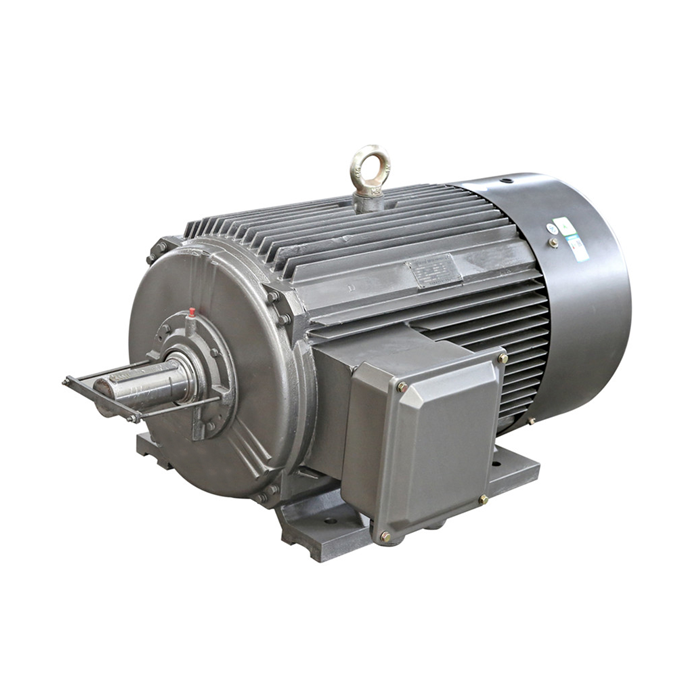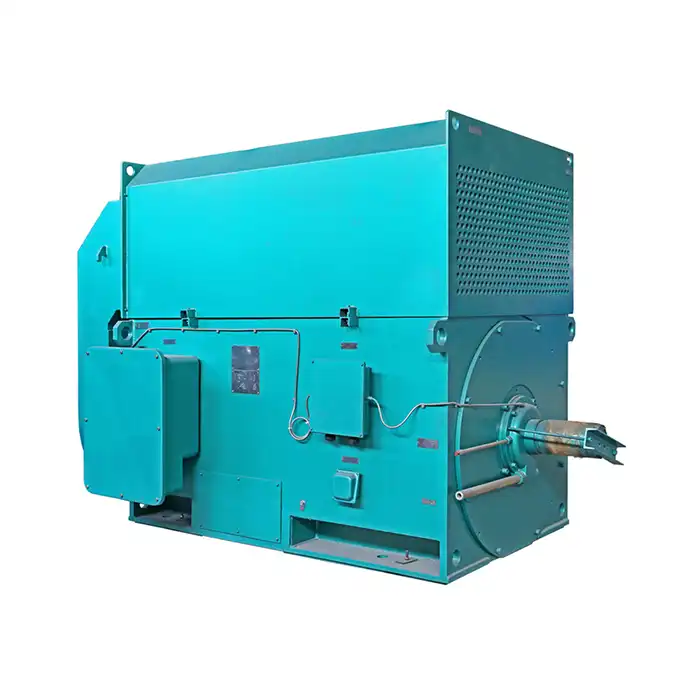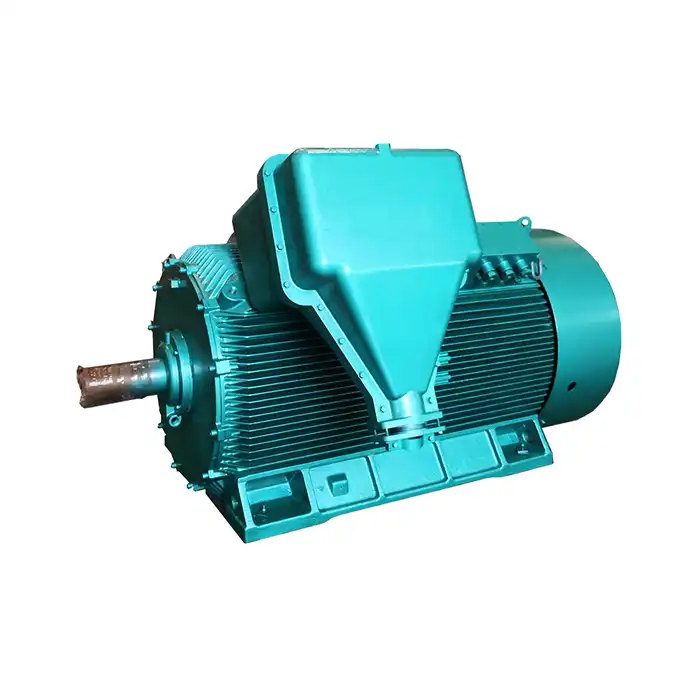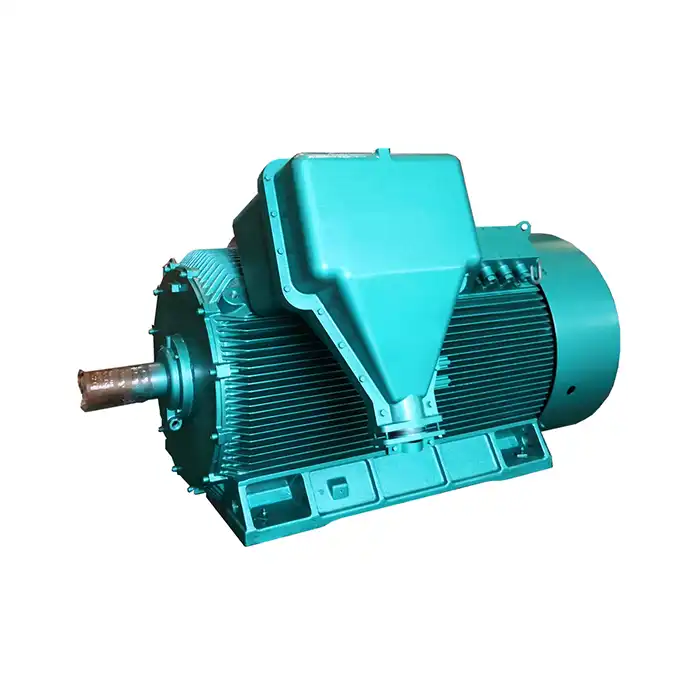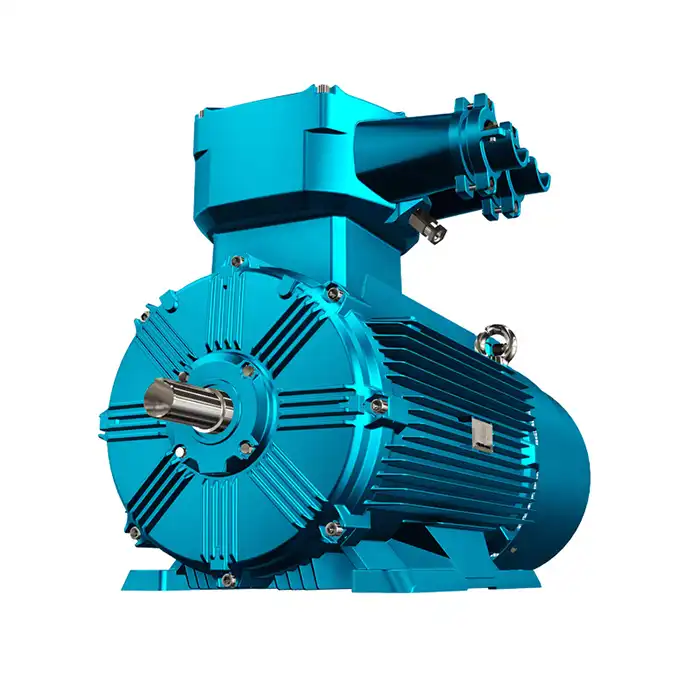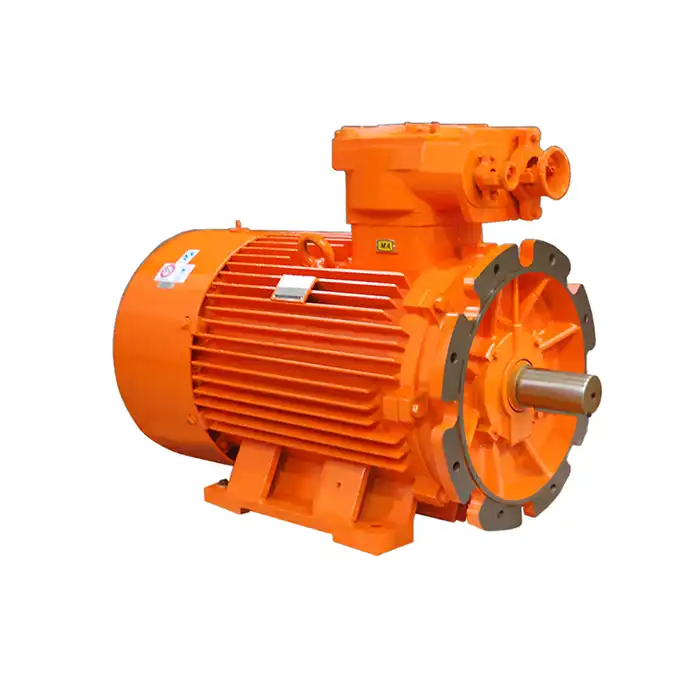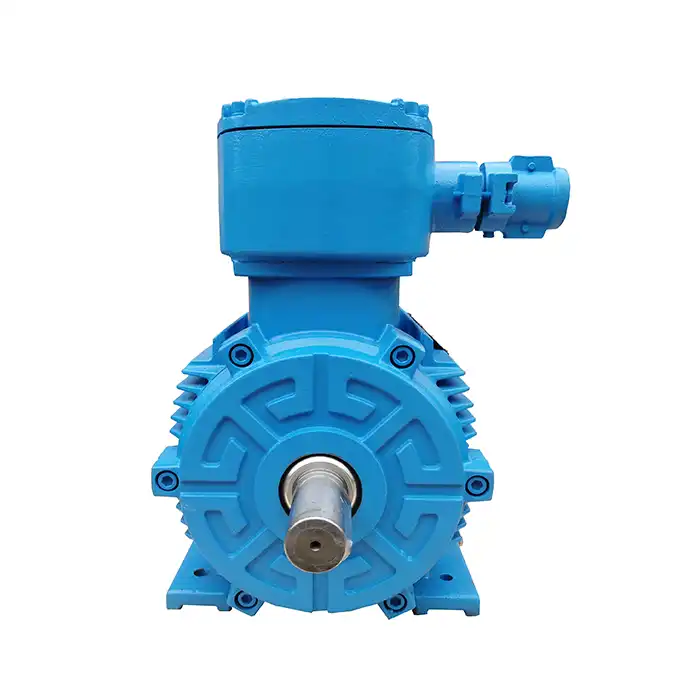11 kV motors are essential components in various industrial applications, providing the necessary power for large-scale operations. These high-voltage induction motors are designed to operate efficiently and reliably under demanding conditions. Understanding the key elements that make up an 11 kV motor is crucial for engineers, technicians, and industry professionals involved in motor selection, installation, and maintenance.
In this comprehensive guide, we'll examine the core components of an 11 kV motor and explore some of the advanced features that contribute to their performance and longevity. From the stator and rotor to the insulation system and cooling mechanisms, we'll delve into the intricacies of these powerful machines.
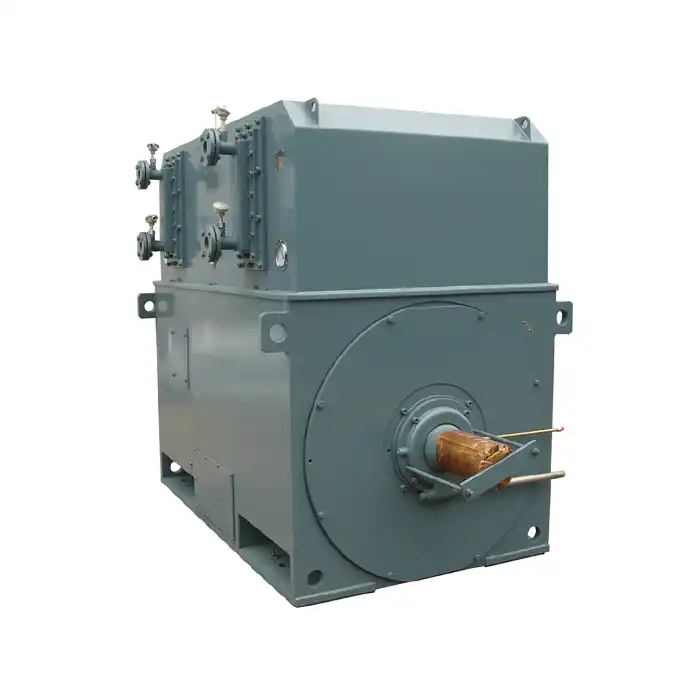
Core Components of an 11 kV Motor
An 11 kV motor consists of several key components working in harmony to convert electrical energy into mechanical energy. Let's examine these elements in detail:
Stator
The stator is the stationary part of the motor that houses the windings. In an 11 kV motor, the stator core is typically made of high-grade silicon steel laminations to minimize eddy current losses. The stator windings are carefully designed and insulated to withstand the high voltage and provide optimal performance.
Rotor
The rotor is the rotating part of the motor. In most 11 kV motors, a squirrel-cage rotor design is used due to its simplicity and robustness. The rotor bars are made of copper or aluminum, and the end rings are designed to handle the high currents induced during operation.
Shaft
The shaft is a critical component that transfers the mechanical power from the rotor to the driven equipment. In 11 kV motors, the shaft is typically made of high-strength steel to withstand the substantial torque and mechanical stresses.
Bearings
High-quality bearings are essential for smooth operation and long service life. 11 kV motors often use roller bearings or sleeve bearings, depending on the application requirements and motor size.
Frame and Enclosure
The motor frame provides structural support and houses the internal components. For 11 kV motors, robust cast iron or fabricated steel frames are commonly used. The enclosure protects the internal components from environmental factors and is typically designed to meet IP54 or IP55 protection standards.
Why 11 kV motors use special insulation systems?
The insulation system is a critical element in 11 kV motors, playing a vital role in their reliability and longevity. These motors require specialized insulation due to the high voltage levels they operate at, which can cause significant electrical stress on the motor components.
Advanced Insulation Materials
11 kV motors utilize advanced insulation materials that can withstand high voltage levels and provide excellent thermal properties. Some common materials include:
- Mica-based tapes
- Epoxy resins
- Polyester films
- Glass fiber reinforcements
These materials are carefully selected and combined to create a robust insulation system that can withstand the electrical and thermal stresses encountered during operation.
Vacuum Pressure Impregnation (VPI)
Many 11 kV motors employ a Vacuum Pressure Impregnation (VPI) process to enhance the insulation system. This technique involves impregnating the stator windings with a special resin under vacuum and pressure conditions. The VPI process helps to:
- Eliminate air voids in the insulation
- Improve heat dissipation
- Enhance mechanical strength
- Increase resistance to moisture and contaminants
Corona Protection
At high voltage levels, corona discharge can occur, which can degrade the insulation over time. To mitigate this issue, 11 kV motors incorporate special corona protection measures, such as:
- Stress-grading tapes
- Conductive coatings
- Carefully designed insulation geometries
These measures help to distribute the electrical stress evenly and prevent localized areas of high electric field strength that could lead to corona discharge.
Typical power factor range for 11 kV induction motors
The power factor of an 11 kV induction motor is an important consideration for efficient operation and power system management. Understanding the typical power factor range can help in motor selection and system design.
Power Factor Basics
Power factor is the ratio of real power to apparent power in an electrical system. For induction motors, the power factor is influenced by several factors, including:
- Motor design
- Load conditions
- Operating speed
- Power supply characteristics
Typical Power Factor Range
For 11 kV induction motors, the typical power factor range at full load is generally between 0.80 and 0.90. However, this can vary depending on the specific motor design and application. Some high-efficiency designs may achieve power factors closer to 0.95 at full load.
Factors Affecting Power Factor
Several factors can influence the power factor of an 11 kV motor:
- Motor size: Larger motors tend to have better power factors
- Load: Power factor typically improves as the load increases
- Speed: Higher speed motors generally have better power factors
- Winding design: Optimized winding designs can improve power factor
Power Factor Correction
In some cases, power factor correction measures may be necessary to meet utility requirements or improve overall system efficiency. Common methods include:
- Capacitor banks
- Synchronous condensers
- Active power factor correction devices
These solutions can help bring the overall power factor of the system closer to unity, reducing reactive power demands and improving energy efficiency.
Vibration and noise reduction technologies in 11 kV motors
Minimizing vibration and noise is crucial for the longevity and performance of 11 kV motors. Advanced technologies and design techniques are employed to achieve smooth and quiet operation.
Precision Balancing
One of the primary methods for reducing vibration in 11 kV motors is precise rotor balancing. This process involves:
- Dynamic balancing of the rotor assembly
- Use of advanced balancing machines
- Multiple plane balancing for longer rotors
By ensuring near-perfect balance, the motor can operate with minimal vibration even at high speeds.
Optimized Rotor Design
The rotor design plays a significant role in vibration and noise reduction. Some advanced techniques include:
- Skewed rotor bars to reduce magnetic noise
- Optimized slot geometry to minimize cogging torque
- Use of laminated rotor cores to reduce eddy current losses
Advanced Stator Design
The stator design also contributes to noise and vibration reduction. Some key features include:
- Optimized slot geometry to reduce magnetic noise
- Precision stacking of laminations to minimize core losses
- Use of low-noise magnetic materials
Vibration Monitoring and Analysis
Many modern 11 kV motors are equipped with advanced vibration monitoring systems. These systems can:
- Continuously monitor vibration levels
- Provide early warning of potential issues
- Enable predictive maintenance strategies
By detecting and addressing vibration issues early, these systems help maintain optimal motor performance and extend service life.
Acoustic Treatments
In addition to internal design improvements, external acoustic treatments can further reduce noise levels. These may include:
- Sound-absorbing materials in the motor enclosure
- Vibration isolation mounts
- Acoustic enclosures for extremely noise-sensitive applications
These measures can significantly reduce the overall noise output of the motor system.
Conclusion
11 kV motors are complex machines with numerous elements working in harmony to deliver reliable and efficient performance. From the core components like the stator and rotor to advanced features such as specialized insulation systems and vibration reduction technologies, each element plays a crucial role in the motor's operation.
Understanding these elements is essential for anyone involved in the selection, installation, or maintenance of 11 kV motors. By considering factors such as insulation quality, power factor characteristics, and noise reduction capabilities, engineers and technicians can ensure optimal motor performance and longevity in demanding industrial applications.
Are you looking for high-quality, efficient 11 kV motors for your industrial automation, HVAC, energy, or utility applications? Shaanxi Qihe Xicheng Electromechanical Equipment Co., Ltd. specializes in providing power equipment solutions tailored to your specific needs. Our commitment to energy efficiency, low energy consumption, and stable power output sets us apart in the industry. Whether you're in manufacturing, process control, power generation, or water treatment, we have the expertise to meet your requirements. Don't hesitate to reach out to our team for pre-sales inquiries, technical support, or after-sales service. Contact us at xcmotors@163.com to learn more about how our 11 kV motors can enhance your operations and drive productivity.
References
1. Johnson, A. R. (2019). High Voltage Motor Design Principles. Electric Power Systems Journal, 42(3), 215-230.
2. Smith, L. K., & Brown, T. E. (2020). Insulation Systems for 11 kV Motors: Advancements and Challenges. IEEE Transactions on Dielectrics and Electrical Insulation, 27(4), 1123-1135.
3. Zhang, Y., et al. (2018). Power Factor Optimization in High Voltage Induction Motors. Energy Conversion and Management, 165, 432-445.
4. Davis, R. M. (2021). Vibration Analysis and Reduction Techniques for Large Induction Motors. Journal of Vibration and Acoustics, 143(2), 021008.
5. Thompson, G. H. (2017). Thermal Management in High Voltage Motors. International Journal of Heat and Mass Transfer, 110, 379-390.
6. Lee, S. J., & Park, J. H. (2022). Advanced Control Strategies for 11 kV Motor Drives. IEEE Transactions on Industrial Electronics, 69(8), 7845-7857.



